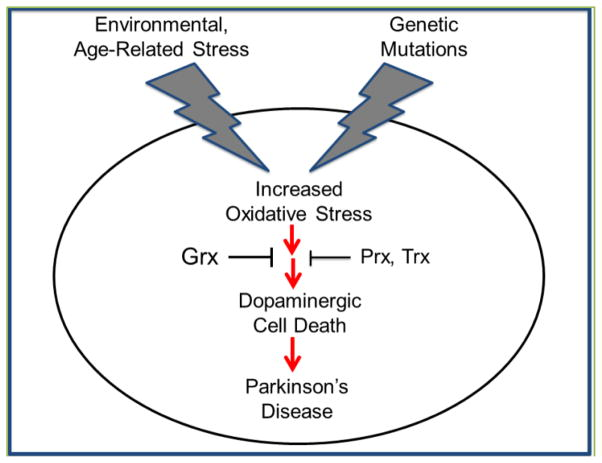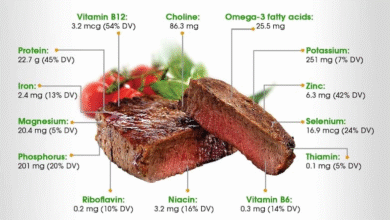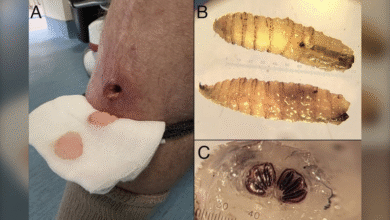Parkinson’s Disease Enzyme Study Reveals New Treatment Insights

A groundbreaking study in the realm of Parkinson’s disease enzyme research has emerged from Stanford Medicine, unveiling promising advancements in the treatment of this debilitating neurodegenerative disease. This vital investigation, published in the journal Science Signaling, delves into the significance of enzymes—specifically the LRRK2 inhibitor—in restoring neuron communication that has been disrupted due to genetic mutations. With around 25% of Parkinson’s cases attributed to such genetic factors, targeting overactive enzymes like LRRK2 could pave the way for innovative therapies aimed at slowing disease progression. Lead author Suzanne Pfeffer, PhD, expressed optimism about the study’s findings, underscoring their potential impact on Parkinson’s treatment advancements. As researchers continue to explore the intricate dynamics between enzymes and neuron communication, the outlook for those affected by Parkinson’s disease appears increasingly hopeful.
Recent discoveries surrounding the enzyme activity in Parkinson’s disease herald an exciting chapter in neurology, addressing critical aspects of neuron functionality and communication. The Stanford Medicine research sheds light on the role of certain proteins, particularly those influenced by genetic mutations, in the deterioration of neuron health in individuals with Parkinson’s. The focus on inhibiting enzymes such as LRRK2 introduces a pioneering approach to mitigate symptoms and potentially enhance patient outcomes. As scientists investigate this intersection of genetic impact and neurodegenerative conditions, the implications for future treatments grow more significant. Continued insights into enzyme behavior not only promise advancements for Parkinson’s but could also inform broader strategies for dealing with other neurodegenerative diseases.
Understanding the Role of Enzymes in Parkinson’s Disease
Recent research conducted by Stanford Medicine has unveiled vital insights into the role of enzymes in the progression of Parkinson’s disease. Enzymes, which are proteins that help accelerate various chemical reactions in the body, play a crucial role in numerous physiological processes, including those in the nervous system. Specifically, the study highlights the significance of the LRRK2 enzyme, which, when overactive due to genetic mutations, disrupts vital communication pathways between neurons. This disruption directly contributes to the debilitating symptoms associated with Parkinson’s, including tremors, stiffness, and impaired movement.
The implications of these findings are profound, as they highlight a potential target for treatment strategies aimed at slowing the disease’s progression. By understanding how enzymes like LRRK2 impact neuronal health and communication, researchers can develop targeted therapies that may restore normal function. This research emphasizes the importance of early intervention and treatment advancements in addressing not only Parkinson’s disease but also other neurodegenerative diseases linked to similar mechanisms.
Frequently Asked Questions
What is the significance of the LRRK2 inhibitor in Parkinson’s disease enzyme study?
The LRRK2 inhibitor, specifically the MLi-2 molecule, plays a crucial role in the Parkinson’s disease enzyme study conducted by Stanford Medicine. It was discovered to counteract the effects of the overactive LRRK2 enzyme, which is linked to genetic mutations responsible for about 25% of Parkinson’s cases. By inhibiting this enzyme, researchers observed significant restoration of neuron communication in mice, indicating a promising avenue for future Parkinson’s treatment advancements.
How did Stanford Medicine’s study contribute to understanding enzyme and neuron communication in Parkinson’s disease?
The Stanford Medicine study examined how excessive LRRK2 enzyme activity disrupts neuron and cell communication, which is vital for cognitive and motor functions. By targeting the LRRK2 enzyme with a specific inhibitor, the researchers were able to restore communication between neurons in mice, suggesting that similar mechanisms might apply in humans. This understanding is pivotal for developing effective treatments for Parkinson’s and other neurodegenerative diseases.
What are the treatment advancements emerging from the Parkinson’s disease enzyme study?
The recent study from Stanford Medicine indicates that inhibiting the LRRK2 enzyme could represent a significant advancement in Parkinson’s treatment. The use of the MLi-2 inhibitor showed promise in restoring neuron health after being administered for several months, suggesting that early intervention could potentially stabilize the progression of symptoms in patients with Parkinson’s disease.
What limitations were noted in Stanford’s mice study on Parkinson’s disease enzymes?
One key limitation of the Stanford research is that it was conducted on mice, which may not fully replicate the complexities of human Parkinson’s disease. While the findings suggest similar pathways may be significant in humans, further research is needed to evaluate the effectiveness of LRRK2 inhibitors in human subjects, particularly for various forms of Parkinson’s and other neurodegenerative diseases.
How can early identification of patients with LRRK2 mutations impact Parkinson’s treatment?
The findings from the Parkinson’s disease enzyme study suggest that early identification of patients with LRRK2 mutations is critical. Early intervention with the LRRK2 inhibitor could potentially stabilize or even enhance the patient’s condition, reducing the progression of symptoms like tremors and stiffness that impact many people with Parkinson’s disease. This positions genetic screening as a valuable tool in developing targeted treatment strategies.
| Key Point | Description |
|---|---|
| Study Overview | Research from Stanford Medicine explores the role of enzymes in slowing Parkinson’s disease progression. |
| Key Findings | Targeting the enzyme LRRK2 with MLi-2 inhibitor restored neuron communication in mice. |
| Initial Results | No changes were observed in the first two weeks of treatment. |
| Long-Term Results | After three months, neuron condition in treated mice improved significantly. |
| Potential Impact | The study suggests early identification of patients could stabilize symptom progression. |
| Future Research | The team plans to explore benefits for various forms of Parkinson’s and other neurodegenerative diseases. |
Summary
The recent Parkinson’s disease enzyme study has shed light on a potential breakthrough in managing the disease. By targeting the LRRK2 enzyme, researchers have discovered a way to improve neuron communication, which is crucial for combating the symptoms of Parkinson’s. As early intervention appears to be key for effective treatment, this innovative approach offers hope for many patients suffering from this chronic condition. Ultimately, the findings may lead to enhanced therapies for not only Parkinson’s disease but also other neurodegenerative disorders, emphasizing the importance of continued research in this promising field.




